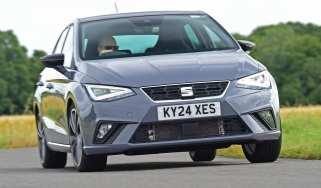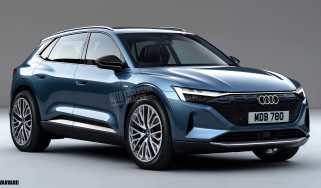Mazda 3
Time was when Japanese manufacturers were reluctant to build diesel engines for their cars. But strong European sales mean they can no longer ignore oil-burners
Look back at the past few years' sales figures and Mazda is clearly doing something right. This diesel can only help. It compares well to rivals and completes a rounded range for the 3. Although the lack of Euro IV compliancy may put off company car drivers, the oil-burner is destined to be a hit.
Time was when Japanese manufacturers were reluctant to build diesel engines for their cars. But strong European sales mean they can no longer ignore oil-burners - with the result that Mazda has rushed to get a decent one into its new Focus-rivalling 3 only two months after sales of the petrol versions started.
Rather than develop its own powerplant, Mazda looked to parent company Ford for help - and struck lucky. The 1.6-litre TDCi is the newest engine to emerge from the blue oval's joint venture with the PSA Group, and has recently been introduced in the C-MAX and Citroen Picasso.
Mazda had to tweak the exhaust to get the unit to fit under the bonnet, but other than that it's the same engine. And while the extra plumbing has resulted in a slight loss of power, this 3 TD S still offers a respectable 108bhp and 240Nm of torque at 1,750rpm.
As with Citroen, though, Mazda has decided to hold off making the engine comply with Euro IV emissions regulation until the end of the year - so the newcomer is still weighed down by the three per cent company car tax levy.
But in contrast to the Citroen, Mazda's engineers seem to have paid more attention to making the sound insulation work effectively. At idle, the powerplant is virtually clatter-free, while at cruising speeds it's quiet and refined, too.
The only real complaint is that the unit becomes a little coarse under hard acceleration. There's no point revving above 4,000rpm because an unpleasant boom penetrates the cabin, while the performance advantage is minimal.
It's better to change up a gear early and make the most of the engine's flexibility. Power delivery is very smooth, with none of the lunge when the turbo kicks in that afflicts other diesels.
Instead, the boost gets to work subtly at 2,000rpm - although below this figure the 3 lacks some responsiveness. You have to wait until the turbocharger is spinning to really benefit from some useful acceleration.
Even then, it's more a case of the extra speed creeping up on you than an impression of out-and-out thrust. Besides the engine, we also took the opportunity to sample the saloon version of the 3 for the first time. It's certainly a sportier-looking model than the hatchback, with a sloping rear which bears a close resemblance to Mazda's bigger family car, the highly successful 6. As you would expect, the four-door can't come close to the hatch in terms of practicality, especially given the narrow bootlid opening. But once inside, luggage space is reasonable. We can see the 3 appealing to a younger audience than other saloons in this sector.
On the road, this Mazda feels identical to the hatch we road tested in Issue 790 - which means it's perfectly accomplished, but happier on a twisty back road than a motorway, where it tends to fidget.
Yet while this is at odds with the diesel engine's relaxed nature, it doesn't detract from the overall feel of the package. So the oil-burner is easily the pick of the 3 range.







